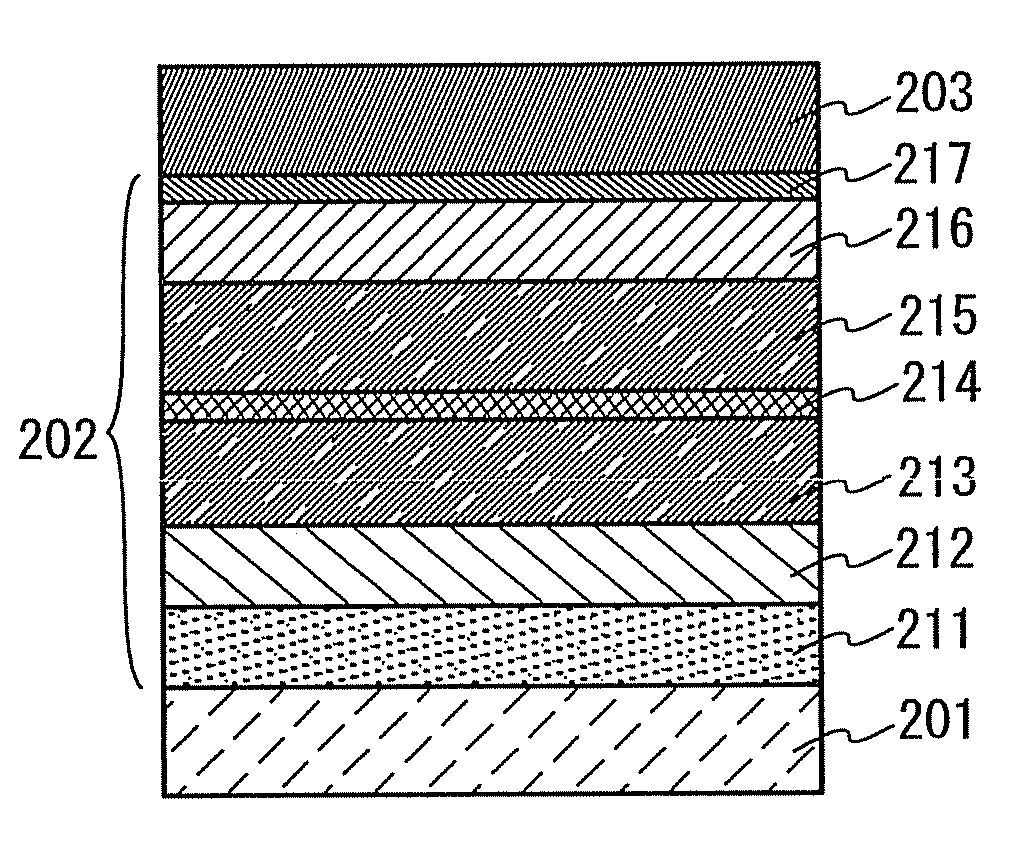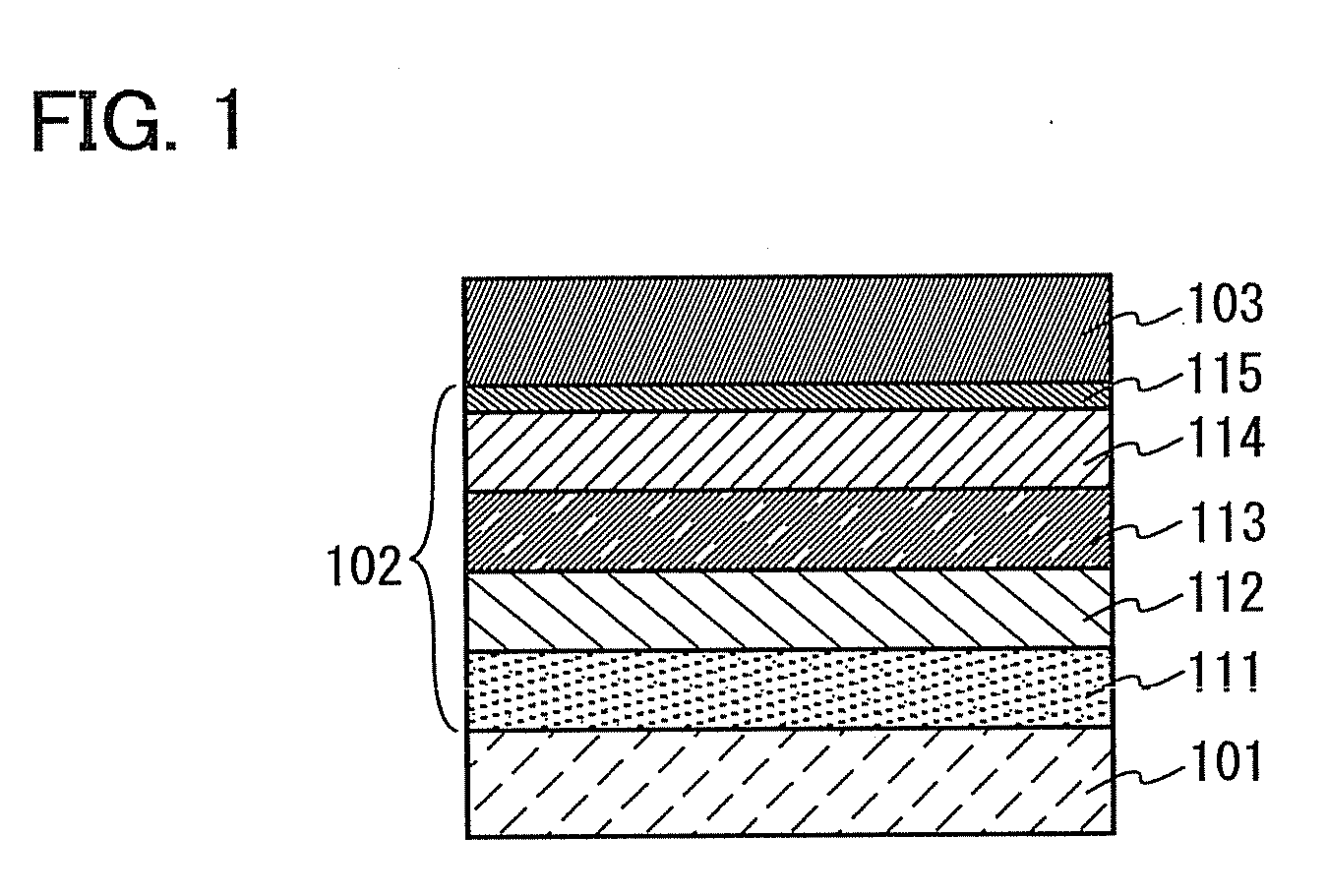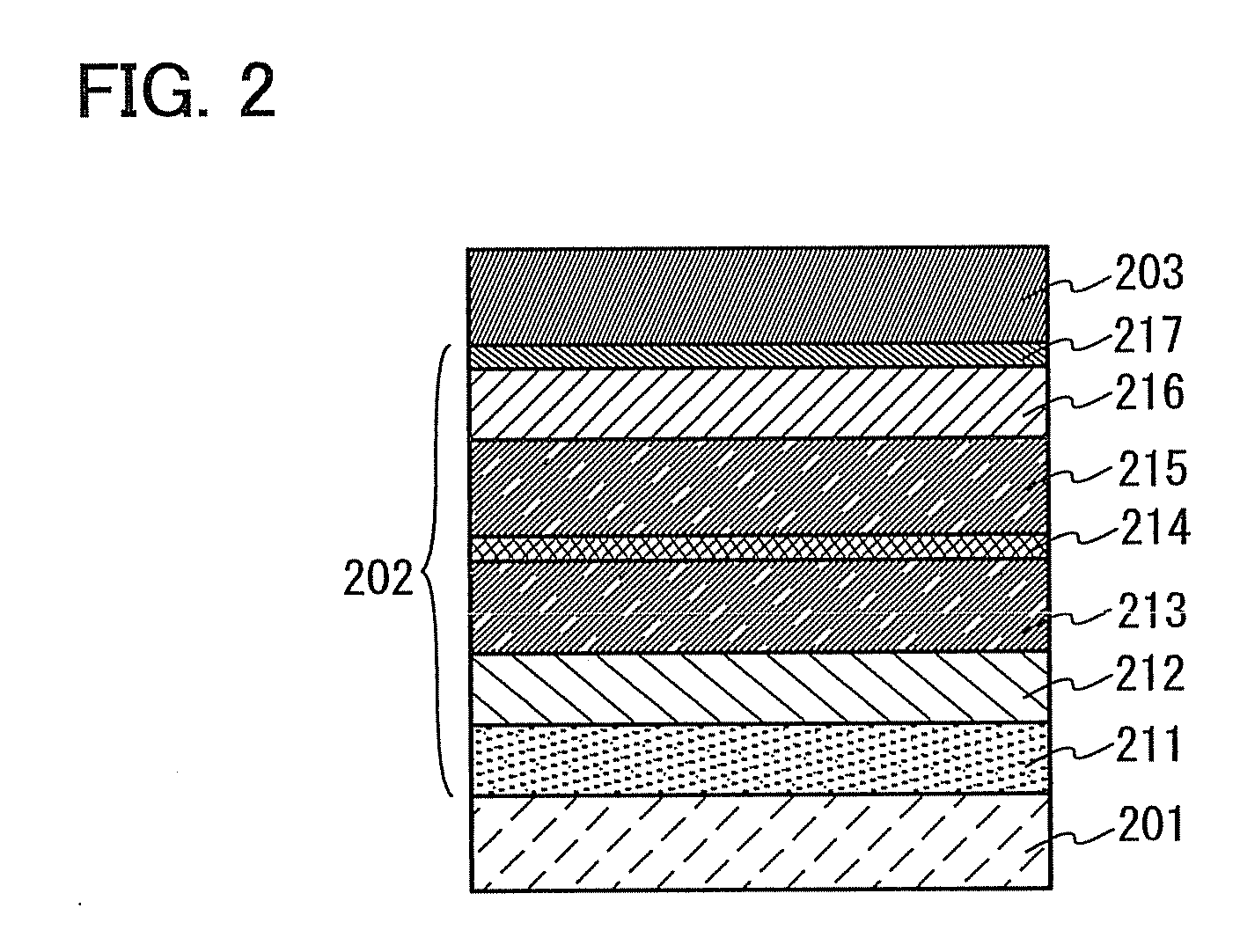Organometallic Complex, and Light-Emitting Element, Light-Emitting Device, Electronic Device, and Lighting Device Using the Organometallic Complex
a technology of organometallic complexes and complexes, applied in the field of organometallic complexes, can solve problems such as difficult generation of triplet excited molecules
- Summary
- Abstract
- Description
- Claims
- Application Information
AI Technical Summary
Benefits of technology
Problems solved by technology
Method used
Image
Examples
embodiment 1
[0075]In this embodiment, organometallic complexes each of which is one embodiment of the present invention will be described.
>
[0076]The m-alkoxyphenyl pyrazine derivative represented by General Formula (G0) below can be synthesized by a simple synthesis scheme described below. The m-alkoxyphenyl pyrazine derivative can be obtained, for example, by a reaction between a lithium compound of m-alkoxyaryl or a Grignard reagent of m-alkoxyaryl (A1) and a pyrazine compound (A2) as shown in Scheme (a) below. Alternatively, the m-alkoxyphenyl pyrazine derivative can be obtained by coupling of m-alkoxyphenyl boronic acid (A1′) and a halogenated pyrazine compound (A2′) as shown in Scheme (a′) below. Further alternatively, the m-alkoxyphenyl pyrazine derivative can be obtained by a reaction between diketone of m-alkoxyaryl (A1″) and diamine (A2″) as shown in Scheme (a″) below. Note that, in the formula, X represents a halogen element.
[0077]Since a variety of kinds of the above compounds (A1), ...
embodiment 2
[0097]In this embodiment, as one embodiment of the present invention, a light-emitting element in which an organometallic complex is used for a light-emitting layer will be described with reference to FIG. 1.
[0098]FIG. 1 illustrates a light-emitting element in which an EL layer 102 including a light-emitting layer 113 is interposed between a first electrode 101 and a second electrode 103. The light-emitting layer 113 contains the organometallic complex which is one embodiment of the present invention, which has been described in Embodiment 1.
[0099]By application of a voltage to such a light-emitting element, holes injected from the first electrode 101 side and electrons injected from the second electrode 103 side recombine in the light-emitting layer 113 to bring the organometallic complex into an excited state. Light is emitted when the organometallic complex in the excited state returns to the ground state. Thus, the organometallic complex which is one embodiment of the present in...
embodiment 3
[0132]The light-emitting element which is one embodiment of the present invention may include a plurality of light-emitting layers. A plurality of light-emitting layers are provided and light is emitted from each of the light-emitting layers, whereby emission in which plural types of light are mixed can be obtained. Thus, white light can be obtained, for example. In this embodiment, an embodiment of a light-emitting element including a plurality of light-emitting layers will be described with reference to FIG. 2.
[0133]In FIG. 2, an EL layer 202 including a first light-emitting layer 213 and a second light-emitting layer 215 is provided between a first electrode 201 and a second electrode 203. Emission in which light emitted from the first light-emitting layer 213 and light emitted from the second light-emitting layer 215 are mixed can be obtained. A separation layer 214 is preferably provided between the first light-emitting layer 213 and the second light-emitting layer 215.
[0134]Wh...
PUM
 Login to View More
Login to View More Abstract
Description
Claims
Application Information
 Login to View More
Login to View More - R&D
- Intellectual Property
- Life Sciences
- Materials
- Tech Scout
- Unparalleled Data Quality
- Higher Quality Content
- 60% Fewer Hallucinations
Browse by: Latest US Patents, China's latest patents, Technical Efficacy Thesaurus, Application Domain, Technology Topic, Popular Technical Reports.
© 2025 PatSnap. All rights reserved.Legal|Privacy policy|Modern Slavery Act Transparency Statement|Sitemap|About US| Contact US: help@patsnap.com



